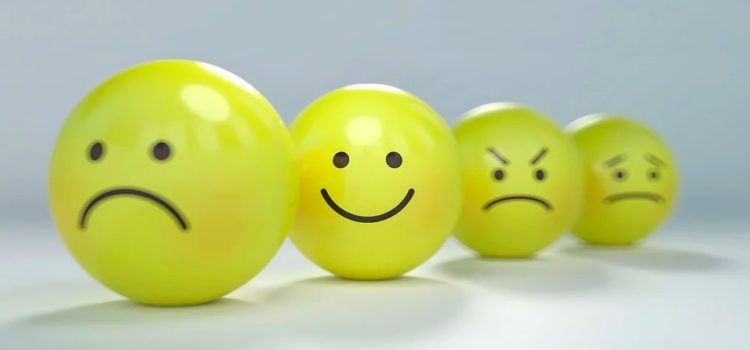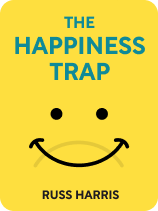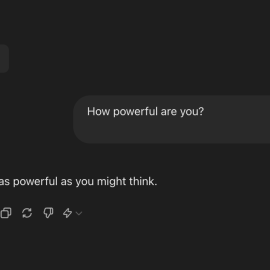

This article is an excerpt from the Shortform book guide to "The Happiness Trap" by Russ Harris. Shortform has the world's best summaries and analyses of books you should be reading.
Like this article? Sign up for a free trial here .
What exactly are emotions? How can understanding emotions—how they arise and unfold—help you regulate your mood and psychological states?
There is no scientific consensus about what emotions are. However, experts generally agree on three things: 1) emotions originate in the “midbrain,” 2) emotions are accompanied by physical changes, and 3) physical changes in the body prompt urges to act on the emotion.
Keep reading to learn about the psychology of emotions, where they originate, and how they unfold.
What Are Emotions?
Although there’s still no consensus as to what emotions are, our understanding of emotions has advanced tremendously over the years. There are three key things to know about emotions:
- The “midbrain,” or middle portion of the brain, is the source of emotion.
- Emotions involve complicated changes in the body. These changes are distributed throughout the body and affect a number of physiological factors such as heart rate, hormone levels, and nervous system activation.
- The physical changes associated with emotion are accompanied by urges to take specific actions (called “action tendencies”). For instance, if you become angry, you might become more likely to respond aggressively to other people, even if the other people are well-intentioned.
This doesn’t mean that emotions cause us to behave in particular ways, only that emotions are frequently accompanied by urges to act. Following through on these urges when we’re experiencing a strong emotion may cause us to regret those actions in the long run. For example, it’s common for people to be angry, say something cruel that they might not have said under ordinary circumstances, then regret having said it.
In general, the experience of an emotion occurs in three steps:
- Something significant occurs. It can be internal (like a negative thought) or external (something that happens outside of you).
- The brain judges whether the event is good or bad. Simultaneously, the brain sends signals to the rest of the body to prepare it to respond to the event. In particular, Harris argues, if the brain decides that the event is “bad,” we experience the fight-or-flight response.
- We begin to experience a number of physiological changes, accompanied by feelings and urges in our bodies. Our thinking self interprets these feelings and urges as “emotion.”
Let’s make this process clearer with an example.
- Fred is driving to work. He’s on the freeway when the car in front of him comes to a sudden halt. He applies the brakes as quickly as he can, but he still ends up in a small fender-bender.
- Immediately afterward, Fred’s body floods with adrenaline. His brain registers that he’s been in an accident and judges this experience to be a “bad” event. His fight-or-flight reflex activates.
- The first sensation that Fred feels is a white-hot flash of anxiety. He doesn’t want to be late for work, but he realizes that he probably will be. Then, he feels anger pooling at the back of his neck. The other person’s reckless driving caused the accident. As Fred pulls over, he feels the urge to get out of the car and yell at the other driver.
This process generates a single instance of emotion, or a feeling. Harris asserts that we register our feelings as discrete sensations in our physical body. Over a protracted period of time, many similar episodes of emotion coalesce to form a “mood.” (Shortform note: The technique of expansion deals with individual feelings, not moods.)
The 3 Components of Emotion
There’s no scientific consensus on emotion, but most scientists agree that emotions have three components, which echo Harris’s steps: experiences (or stimuli), physiological changes, and behavioral responses. However, scientists disagree about the order in which we experience each of these elements of emotion.
Let’s treat each of these elements in turn:
- The first component of an emotion is an experience, or stimulus. The experience of a stimulus is subjective—for example, one person may respond to a child’s doll with fear while someone else wouldn’t have this response. Harris’s definition of an “event” reflects that this stimulus can be external (seeing the doll) or internal (the feeling associated with the doll).
- The second component is physiological changes. These physiological changes are regulated by the autonomic nervous system, which controls our fight-or-flight response (among other things). Physiological changes are involuntary—the brain reacts automatically to stimuli, whether an approach or an avoidance reflex is triggered. So while Harris’s explanation that the brain “decides” whether an event is good or bad is misleading.
- The third component is behavioral responses. Behavioral responses include smiling, grimacing, and frowning. This behavioral element of emotion is similar to Harris’s concept of “urges” or “action tendencies” that prepare us to take action.

———End of Preview———
Like what you just read? Read the rest of the world's best book summary and analysis of Russ Harris's "The Happiness Trap" at Shortform .
Here's what you'll find in our full The Happiness Trap summary :
- Why trying to be happy is making you unhappy
- How to practice ACT, or Acceptance and Commitment Therapy, to become happier
- How to develop “psychological flexibility” toward negative feelings instead of eliminating them






